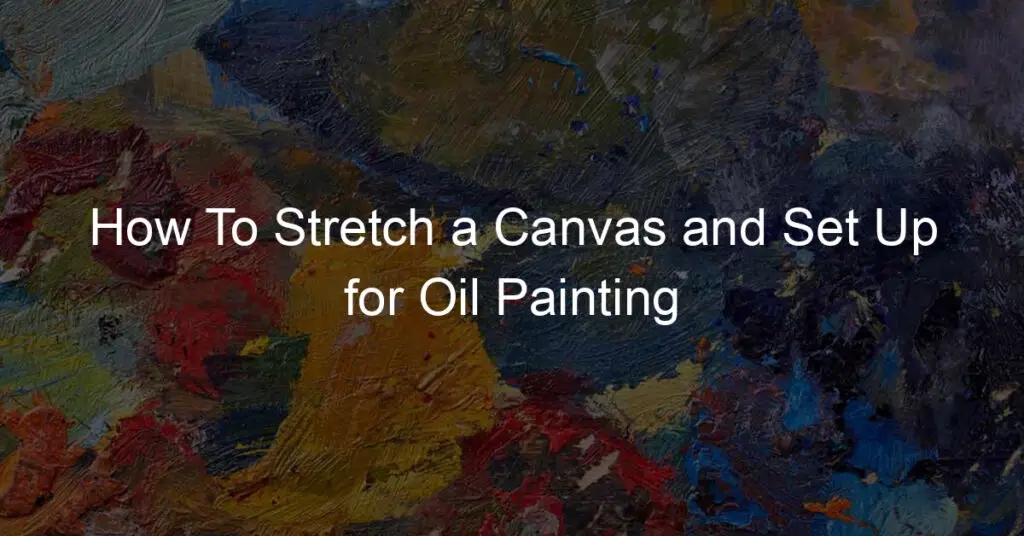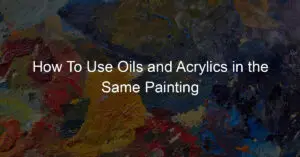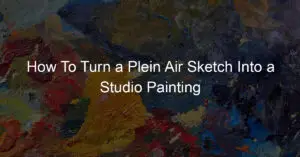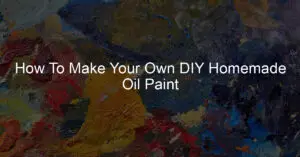Are you an artist or painter who is looking to stretch a canvas and set up for oil painting?
If so, this blog post is for you! In this post, we’ll provide step-by-step instructions on how to properly stretch a canvas and set up your workspace for oil painting.
We’ll also give some tips on what supplies you’ll need to get started. So whether you’re a beginner or a seasoned pro, be sure to read on for everything you need to know about stretching a canvas and setting up for oil painting!
How do you stretch a painted canvas step by step?
Stretching a painted canvas yourself may seem like a daunting task, but with the right supplies and directions, you’ll find that it is far easier than you think!
Start by getting a wooden frame, some screw-in D-rings, and some picture-framing wire.
You will also need a foam roller and staples or tacks. To start stretching the canvas on the frame, pull it tight and use your roller to apply firm pressure from one edge to the other.
For extra secureness, attach D-rings along each side of the frame before slipping picture framing wire into them.
Wrap the wire around itself in between the D-rings for added grip and then fold over any extra length of canvas around the back of the frame before using staples or tacks to secure everything in place.
After that, all you have left to do is hang your newly stretched canvas!
How do you prepare a canvas for oil painting?
When it comes to oil painting, preparing the canvas is a crucial part of the process.
To begin, use a clean piece of cloth and brush away any dust or debris from the canvas. Once that is done, you will want to apply a coat of gesso to create an even base for you to work on.
Use either sandpaper or fine steel wool and lightly press over the gessoed surface to make sure it is as smooth as possible.
Finally, for an added layer of protection, use a varnish or wax finish, then you’re ready for all your creative endeavors!
How can I stretch my canvas at home?
Stretching your canvas at home can seem like a daunting task, but it doesn’t have to be.
All you need is some basic supplies that you can easily find in any store: wooden stretcher bars, staple guns, and canvas fabric.
Start by cutting the fabric according to the size of your frame; then place the fabric centered over the frame and staple its outer corners securely onto one side first.
Pull the fabric taut on all sides before stapling it on the opposite side with equal tension.
Finally, apply pressure between each intersecting point of the frame with extra staples being placed in each corner for extra reinforcement.
Now your canvas is ready for painting! You’ve now saved yourself time, money, and effort while having fun doing it yourself – what’s not to love?
Do you paint on canvas before or after stretching?
When you’re ready to begin painting on canvas, the first decision you have to make is whether you’ll stretch the canvas before or after painting.
Some artists prefer to prime and stretch their canvas before painting directly onto it, as it helps create a smoother surface and can help produce better results.
However, acrylic paints are often thick enough that they won’t sag between tacks if you stretch your canvas afterward.
Ultimately, the best choice for you will depend on your skills and preferences; experiment with both methods and see which one works for you!
Should you paint the canvas before stretching it?
Painting a canvas before stretching it can be a great way to start your creative project.
Stretching an unstretched canvas is like starting with a blank slate: you get to shape and create the entire picture on your own.
By painting the canvas first, you’ll have room to make mistakes without ruining the whole project— any miscalculations can easily be covered over when you stretch the canvas.
It’s also a great time-saver: if you’re making a series of pieces in the same style, having one base layer of paint can give everything a consistent look without having to create every element of each piece one at a time.
All around, painting your unstretched canvas can save you money and speed up your projects significantly!
Do you prime canvas before or after stretching?
Knowing when to prime your canvas is a common dilemma for any artist looking for that perfect piece.
A lot of people think you should wait until after you’ve stretched the canvas, but this is not the best approach for two reasons:
firstly, if you prime after, chances are there will be cracking at the edges where it has been creased and this won’t give you an even, flawless finish;
secondly, the residual moisture in your primer can lead to misalignment while stretching and cause ripples in the fabric.
The better method is to prime before stretching and make sure you have enough time between priming and stretching so that all paint layers are completely dry – otherwise, again, you’re risking that unsightly finish!
With these considerations in mind, it’s easy to get those gorgeous results with minimal effort.
Conclusion
Now that you know how to properly stretch a canvas and set it up for oil painting, you’re ready to start your next project!
Be sure to take your time with the stretching process and pay careful attention to the measurements. With a little practice, you’ll be able to get the perfect tension on your canvases every time.


















